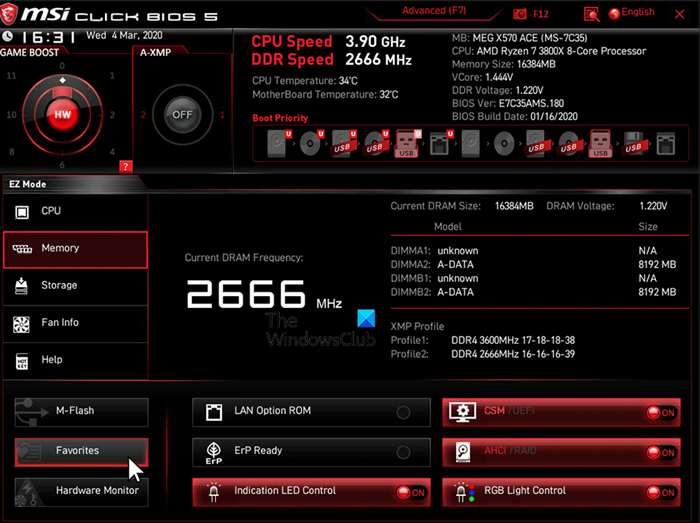Check if you are using UEFI or BIOS on Windows. On Windows, “System Information” is in the Start panel, and under BIOS Mode, you will find the Boot Mode. If it says Legacy, your system has a BIOS. If it says UEFI, then it’s UEFI.
Do all BIOS have UEFI?
You May Not Need UEFI Although all modern computers come with UEFI as standard, there are a few reasons why you might prefer BIOS over UEFI: BIOS provides system information to the operating system. So if your operating system is running in 16-bit mode, you don’t need to write any code to interact with hardware.
How do I know if my motherboard supports UEFI or BIOS?
Alternatively, you can also open Run, type MSInfo32, and press Enter to open System Information. If your PC uses BIOS, Legacy will be displayed if it uses UEFI, UEFI! If your PC supports UEFI, you will see the Secure Boot option as you go through your BIOS settings.
Where can I find UEFI in the BIOS?
Select UEFI Boot Mode or Legacy BIOS Boot Mode (BIOS). Enter the BIOS Setup Utility. Select Boot from the BIOS main menu screen. Select UEFI/BIOS boot mode at the boot screen and press Enter. Use the up and down arrows to select Legacy BIOS Boot Mode or UEFI Boot Mode, then press Enter.
Is the UEFI configuration in the BIOS?
Many computers with UEFI firmware allow you to enable an older BIOS compatibility mode. In this mode, the UEFI firmware functions as a standard BIOS instead of UEFI.
Should I boot from UEFI or Legacy?
Compared to Legacy, UEFI has better programmability, greater scalability, higher performance, and higher security. UEFI provides a secure boot to avoid loading several on the Boot. Windows system supports UEFI from Windows 7, and Windows 8 uses UEFI by default. B
Can I use MBR with UEFI?
When installing Windows on UEFI-based PCs using Windows Setup, your hard drive’s partition style must be set to support UEFI mode or legacy BIOS compatibility mode. You cannot use two together. To boot into UEFI BIOS with your current MBR partitioned HDD, you must reformat it to GPT.
Can I upgrade from BIOS to UEFI?
You can upgrade BIOS to UEFI and switch from BIOS to UEFI directly in the operating interface (as above). However, if your motherboard is too old, you can only update the BIOS to UEFI by changing to a new one. It is highly recommended that you back up your data before doing anything.
Is my BIOS UEFI or Legacy?
Check if you are using UEFI or BIOS on Windows. On Windows, “System Information” is in the Start panel, and under BIOS Mode, you will find the Boot Mode. If it says Legacy, your system has a BIOS. If it says UEFI, then it’s UEFI.
What is the BIOS or UEFI version?
BIOS (Basic Input/Output System) is the firmware interface between a PC’s hardware and the operating system. UEFI (Unified Extensible Firmware Interface) is a PC’s standard interface. UEFI replaces the older BIOS firmthe nsible Firmware Interface (EFI) 1.10 specifications.

How do I install Windows in UEFI mode?
First, molded Boot from Storage Devices to UEFI driver. Note Connect a USB Windows 10 UEFI installation key. Boot the system into the BIOS (for example, with F2 or the Delete key). Locate the Boot Options menu. Set Launch CSM to Enabled. Set Boot Device Control to UEFI only. You fSave your changes and reboot the system.
Should UEFI Boot be enabled?
Secure Boot must be enabled before installing an operating system. If an operating system was installed with Secure Boot disabled, it will not support Secure Boot and will require a new installation. Secure Boot requires a recent version of UEFI. Window Vista SP1 and later support UEFI.
Does Windows 10 require UEFI?
Do you need to enable UEFI to run Windows 10? The short answer is no. You do not need to enable UEFI to run Windows 10. It is fully compatible with both BIOS and UEFI. However, it is the storage device that UEFI needs.
What is the UEFI boot process?
Windows 10 uses the Unified Extensible Firmware Interface (UEFI) to support the transfer of system control from the SoC firmware bootloader to the operating system. The UEFI environment is a minimal boot operating system that boots devices and runs the Windows 10 operating system. For more information, see UEFI in Windows.
What does UEFI mean in BIOS?
UEFI sh, ort for Unified Extensible Firmware Interface, providing users with a faster, sleeker experience. Note: Newer PCs with UEFI may still call it the BIOS to avoid consumer confusion. But before we get too deep into UEFI, it’s important to understand what came before it: BIOS.
Does Windows 10 use UEFI or Legacy?
To check if Windows 10 is using UEFI or Legacy BIOS with the BCDEDIT command. 1 Open an elevated command prompt or a command prompt at startup. 3 Look under the Windows Boot Loader section for your Windows 10 and see if the path is Windowssystem32winload.exe (legacy BIOS) or Windowssystem32winload. EFI (UEFI).
What happens if I change Legacy to UEFI?
After you convert the Legacy BIOS to UEFI boot mode, you can boot your computer from a Windows installation disc. Now you can go back and install Windows. If you try to install Windows without these steps, you will get a “Windows cannot be installed to this drive” error after changing the BIOS to UEFI mode.
Does UEFI boot faster than Legacy?
Today, UEFI is gradually replacing the traditional BIOS on most modern PCs, as it includes more security features than legacy mode BIOS and boots faster than legacy systems. If your computer supports UEFI firmware, you must convert the MBR disk to a GPT disk to use UEFI boot instead of BIOS.
